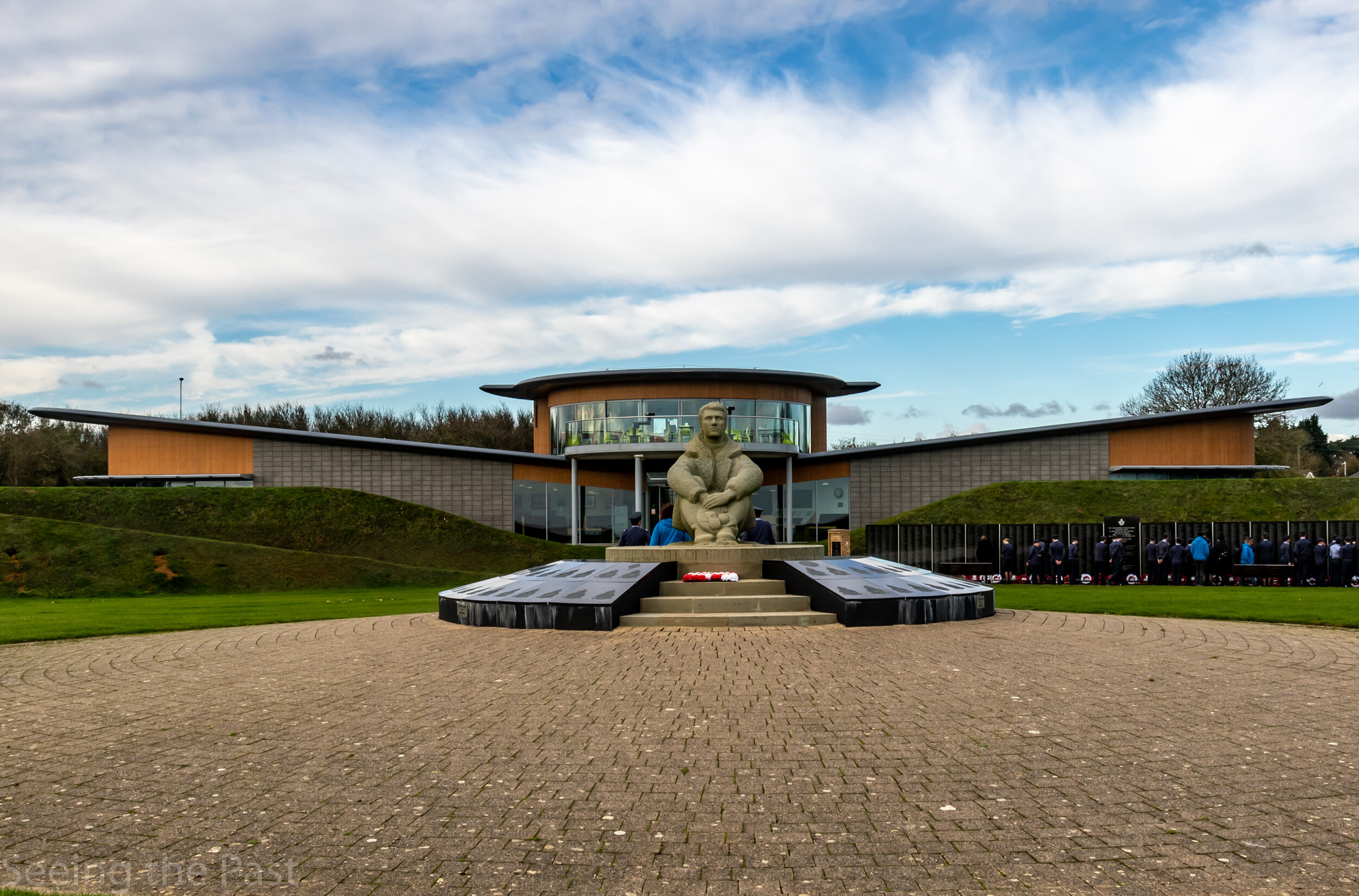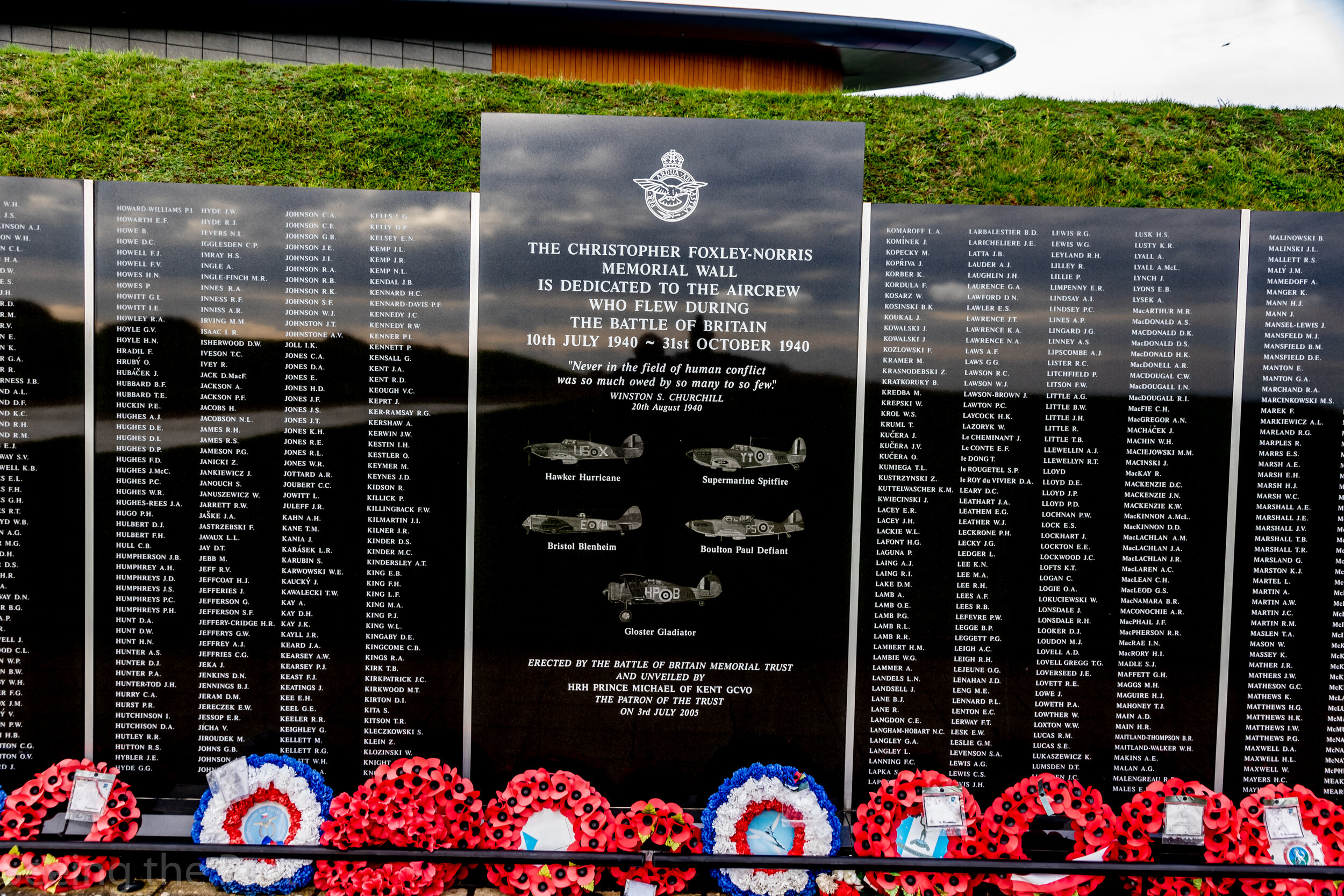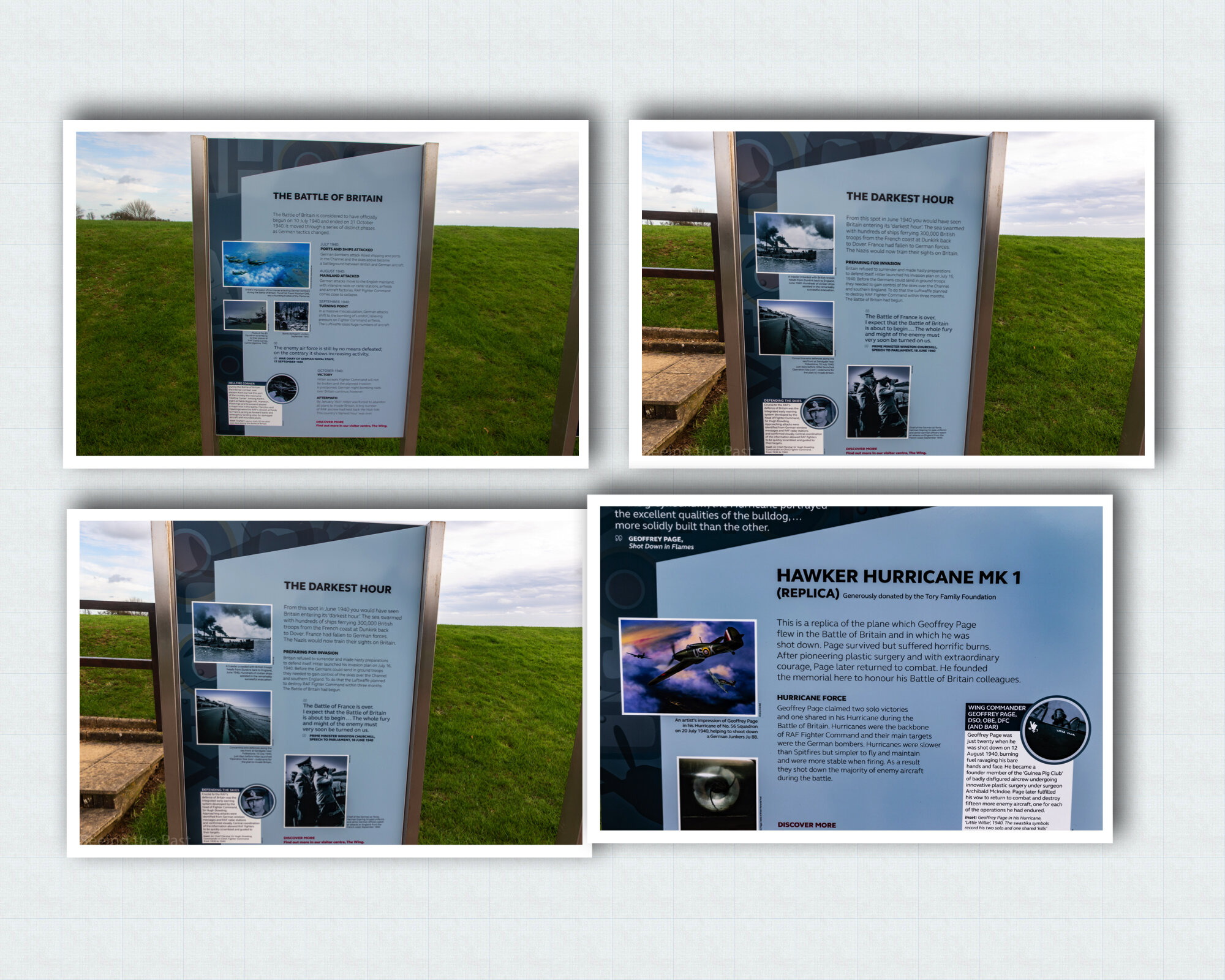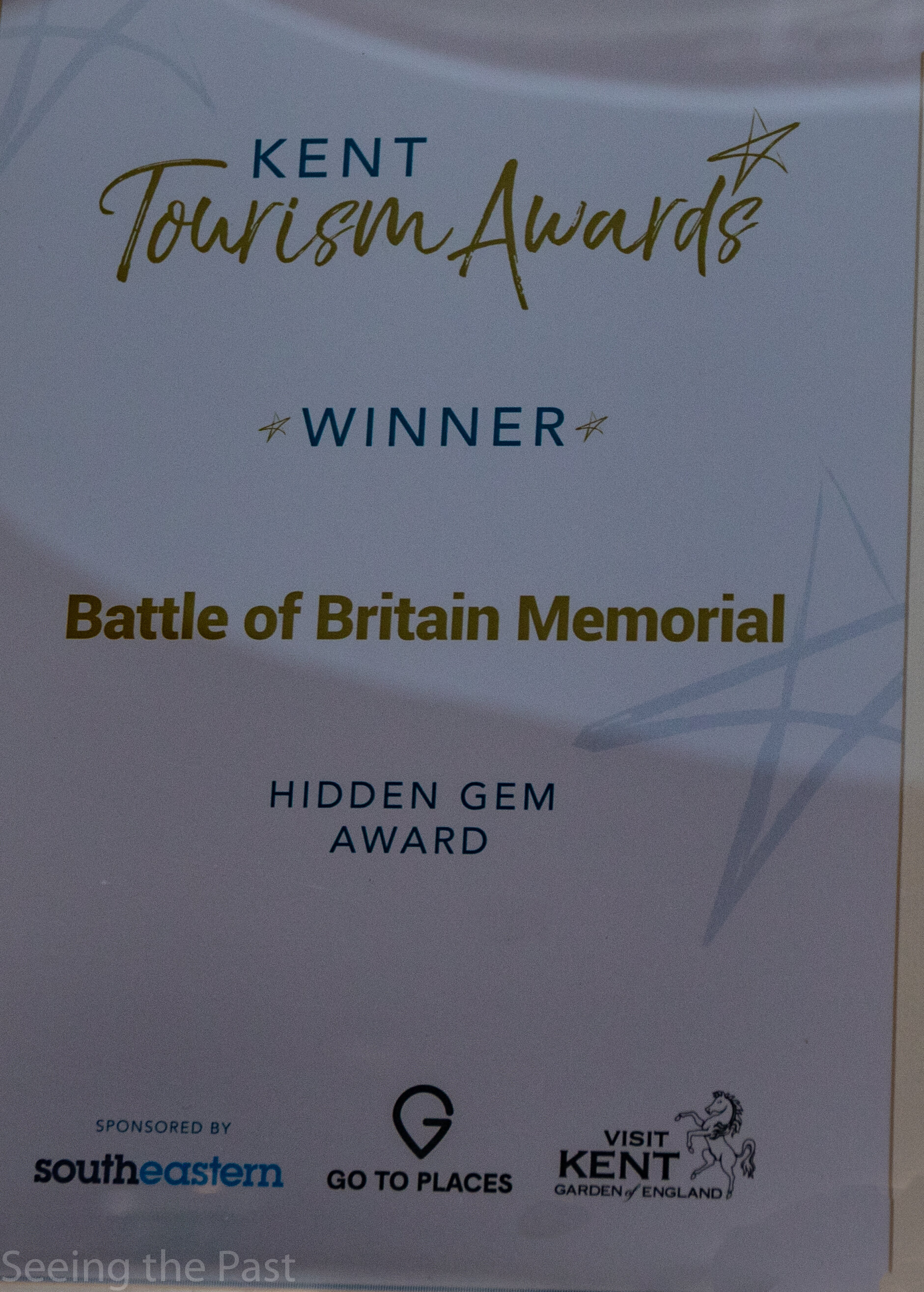The Battle of Britain's "National Memorial to the Few".
/This new memorial is “dedicated to the heroic and selfless deeds of the men who fought the Battle of Britain, 10 July to 31 October, 1940.”The evocative statue of a Battle of Britain was carved by Harry Gray of the Carving Workshop in Cambridge and sits in the centre of a giant propeller.(sadly I really needed a drone to get a good photo including the propeller). The jacket that the pilot is wearing, intentionally, has no badges to signify nationality or rank signifying that pilots from Britain were accompanied by nationals from all over the British Empire and even Europe. Of significant importance were 145 airmen from Poland, many of whom were based at RAF Northolt in London.
The idea for a memorial came from Wing Commander Geoffrey Page who discovered many years after the war that a memorial to the brave airmen who lost their lives to save Britain did not exist. The story of Geoffrey Page is a brilliant example of a Battle of Britain pilot. When flying his hurricane on the 12th August 1940 his plane was hit and he had to bale out. Fortunately, he survived but suffered horrific burns. A few miles away in East Grinstead, an amazing surgeon, Sir Archie McIndoe was developing new plastic surgery techniques with Geoffrey Page one of the early pilots to have his face and body resculptured. Illustrating the comraderie and humour of these early patients of McIndoe, they gave themselves the name, “The Guinea Pig Club”. Geoffrey Page’s war was not finished, however because he eventually returned to operational flying and eventually became a wing leader. He went on to survive the rest of the war and died in August 2000 shortly after attending the Memorial Day for the 60th anniversary of the Battle of Britain. By then his dream of a memorial on the Kent coast where so many air battles had taken place, had been made a reality.
What was the Battle of Britain?
During the summer of 1940, Hitler was master of all mainland Europe and with France surrendering in June, Britain was alone. The situation looked grim for Churchill . For Hitler, Italy was an ally, the USSR had a non-aggression pact and Spain was supposedly neutral and so Britain was obviously his next target. To conquer Britain, Germany would have to launch a seaborne attack and to do that successfully, Britain’s air defences would have to be taken out. A flotilla of German ships and barges full of soldiers and equipment, would be sitting ducks for any air attack and so the destruction of the RAF would be next on Hitler’s list of operations. Destroying the ability of the RAF to sink ships meant that their bases would have to be bombed out of existence along with their planes and personel.
The official dates for the Battle of Britain are between 10 July and 31 October 1940. During final days of Octobe 1940r, Hitler came to the realisation that his cherished invasion plan, Operation Sealion would have to be postponed indefinitely and his attention turned to organising the land-based invasion of the USSR, Operation Barbarossa. Churchill’s response was the famous sentence;”Never in the field of human conflict was so much owed by so many to so few.” The few being just under 3000 men of Royal Air Force Fighter Command who were at the forefront of British resistance. Over 500 airmen died in Battle of Britain another 800 were to die before the end of the war in 1945.
Get up close to the iconic planes of the Battle of Britain.
Replica Spitfire at the memorial.
Replica of a Hurricane at the memorial.
Air Chief Marshall Hugh Dowding
Air Chief Marshall Keith Park
Who led the British in the Battle of Britain?
The man in overall charge of “Fighter Command “ in the Battle of Britain was Air Chief Marshall Hugh Dowding. It was Dowding’s brilliant detailed preparation of Britain's unified air defences that paved the way for victory over the German assault. Radar sightings combined with information from the observer corps were quickly relayed to a central hq, analysed and then sent out to squadron bases that gave the RAF accurate information to make crucial decisions about where to defend and who to send. There is a statue of Dowding outside St Clement Danes church on the Strand in London. Part of the inscription reads:”In the preliminary stages of that war, he thoroughly trained his minimal forces and conserved them against strong political pressure to disperse and misuse them. His wise and prudent judgement and leadership helped to ensure victory against overwhelming odds and thus prevented the loss in the Battle of Britain and probably the whole war. “
It has been said that while Sir Hugh Dowding controlled the RAF's air defence in the Battle of Britain day to day, it was Keith Park who controlled it hour by hour. Promoted to the rank of air vice marshal, Park took command of No 11 Group RAF responsible for the fighter defence of London and southeast England, in April 1940. He organized fighter patrols over France during the Dunkirk evacuation before masterminding victory from the RAF Uxbridge Bunker, in the Battle of Britain. Air Vice-Marshal J E 'Johnnie' Johnson said, "He was the only man who could have lost the war in a day or even an afternoon". You can visit the actual bunker in Hillingdon where vital decisions were made . See my blog on the Bunker on what to see and how to get there. https://www.seeingthepast.com/blog/the-battle-of-britain-bunker
Plenty of information boards around the memorial.
The Scramble Experience.
Inside the main building, “The Wing”, is the “ interactive Scramble Experience” which features a unique video that brings to life the Battle of Britain. Clips of the video are interspersed with comments from some of the veterans – the Few – who took part in the conflict in 1940. You can see a clip from their video below.
Essential information
Getting there
The site is approached from either Dover or Folkestone on the B2011 at Capel le Ferne. When coming from London, leave the M20 at J13 and follow the signs. The postcode is CT18 7JJ.
There is a good bus service From Folkestone to the site and a bus stop directly outside The Wing. Stagecoach in East Kent‘s The Wave service (bus 102) runs from the centre of Folkestone – Shellons Street Car Park to the site.
There are regular train services to Folkestone, with taxis available from the station.
Ticket prices
Free entry but a small parking charge and an entrance fee if you want to see the “Scramble Experience”. The memorial, wall, planes etc are free. There is a cafe for simple refreshments and there are toilets.
Opening times
1 March to end September, 10am – 5pm (last entry to the Experience/cafe purchase 4.30pm)
1 October to end February, 10am – 4pm (last entry to the Experience/cafe purchase 3.30pm)
Follow us on social media
Articles you might like;































Completed in 1952 and maintained by the Commonwealth War Graves Commission, this peaceful cemetery is the last resting place for 4144 named Commonwealth (the UK and former British Empire) soldiers and 338 unidentified ones. Added to this, are 500 graves of soldiers from other countries, the majority being German. It is a fascinating place to visit and observe all the different headstones and some of the stories they tell. The cemetery provides a solemn and peaceful atmosphere, with meticulously maintained rows of white headstones bearing the names of those who fell in the line of duty.